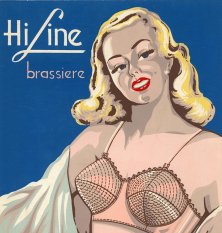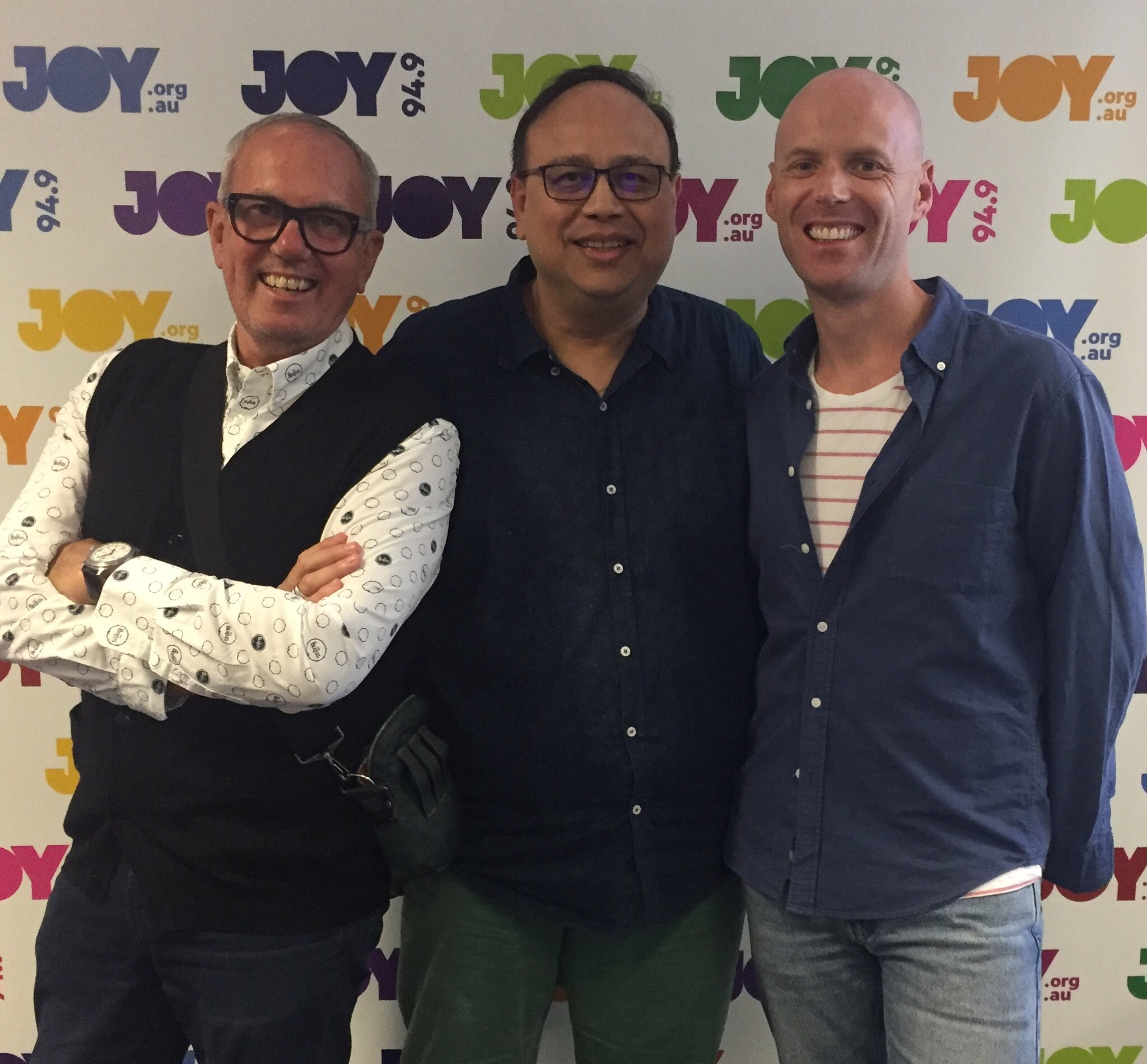MIFF reviews, Open House 2016, Paul Newcombe, Emporium, Milk Bars
LISTEN TO PODCAST NOW
Podcast: Play in new window | Download (Duration: 1:28:32 — 40.5MB)
Subscribe or Follow Us: Apple Podcasts | Google Podcasts | Blubrry | Podchaser | Email | RSS

Brendan reviews some films he saw at MIFF and also talks a bit about the festival itself. First for review is Opening Night film The Death and Life of Otto Bloom an Australian film which is a MIFF Premiere Fund-supported feature. It stars Xavier Samuel as well as Rachel Ward and her daughter Matilda Brown and is about a man remembering his life in reverse i.e. his future but not his past. Brendan wanted to like it but didn’t think it quite gelled–2 stars. Next is French ‘body horror’ film Evolution. It’s the story of a young boy living in a commune-like setup on an island where the surrounding water plays a big part. It’s slow and mysterious giving little bits of info at a time–3.5 stars. As an aside, David likens the style of the film to Australian pay-TV series The Kettering Incident which he’s really enjoying. Next is High Rise– Set in the 70s it stars Tom Hiddleston as a man living in an apartment building which has a character of its own and caters to the residents’ every need. It has a class system and is a microcosm of British life in that period–2.5 stars. Next is Neon Demon, a film about the modelling industry in LA and very referential to the excessive 1970s Italian Giallo genre. It does have some depth to it and is essentially a psychological horror film. Brendan loved it–4 stars. At the end of the show Brendan reviews Embrace of the Serpent (on at Cinema Nova and Palace Cinemas) a doco style film set in the Amazon jungle where no white man has been and covers topics such as colonisation. It’s a bit of a thriller but more an exploratory types of film 4 stars.
David and Brendan then discuss Open House Melbourne from this weekend (which has just finished). It is a popular event where many normally inaccessible buildings, are open to the public. This includes the classic historical buildings as well as more modern ones (some with built in sustainability). They specifically mention– 41X, Limelight Studios and Salvation Army Heritage Centre, Myer Mural Hall and The Victorian Artists’ Society.
Special guests today are:
31:12 to 47:30 mins–Paul Newcombe is a painter and is here to talks about his Exhibition– Conversations/Construction— on from 4 to 20 August at Bright Space gallery at 8 Martin St, St Kilda. Paul’s family emigrated from England to Devonport in Tasmania in1962. His mother used to go to galleries and theatre and passed on this interest to her children. Also, Devonport had many European educated professionals who over time set up theatre companies, theatres and a gallery. Paul studied art at nightschool and later at the Tasmanian School of Art and also became involved in performance art when there. He met experimental- theatre people and went to Adelaide with them and later to Melbourne and got paid for doing stage dressing and other work. All this time he continued painting and also had exhibitions every 2 years. He’s always been an abstract painter and always presents new work at his exhibitions. His work process is ‘old-school’ in that he starts with small drawings and small coloured pieces and builds up to a large piece and then he’ll ‘run it’–i.e. he’ll run the formula or idea, painting a large number of pieces for a show. Paul then discusses a one-night pop-up exhibition he did with another artist; both selling ‘affordable art’ and also why his present exhibition is called Conversations/Construction. Essentially – in conversation with the gallery staff he came up with a layout of how the exhibition would be hung before he started the paintings; hence he had to start construction. He also explains the ‘grid’ style of the paintings consisting of many small squares, do the painting looks different up close to how it does from a distance.
49:32 to 1:06:36 mins–Gabby Haynes is the Acting Programs Officer for Yarra Ranges Regional Museum (YRRM) in Lilydale, which is a ‘social history museum’. She’s here to talks about their exhibition Emporium (The rise of the 1950s department store) on from 27 July to 23 October along with a series of events over that time. Once Gabby got her PhD in History she started working in museums as she wanted to tell the general population about history. YRRM has an extensive collection and uses this for exhibitions on local history. They also have touring exhibitions such as Emporium–which comes from Albury and is based upon an iconic shop there. They occasionally have art exhibitions too. YRRM is open 7 days and exhibitions are free. Department stores are an extension of what an Emporium was. Abikhair’s Emporium in Albury was started by immigrants; much like Myer’s but didn’t expand much past the local area. The department store that Emporium is based on was one started in 1928 and didn’t close till 1996. One of the sons kept old merchandise that hadn’t been sold. This included clothing, haberdashery and lingerie as well as 1950s advertising which are all in the exhibition; along with videos interviews of historians, former employees etc. Gabby and our hosts talk more about the 1950s store experience and products, including– changes that were happening, the start of mass production, standardised sizing , personalised service, products made to last and opportunities for women. Gabby suggests to come out and do a workshop or see a talk as well as see the exhibition.
1:07:04 to 1:25:26 mins–Director Gorkem Acaroglu is here to talk about Milk Bars–‘a cross between an Exhibition and a Live Event’– July 27 to August 6 at the Mechanics Institute, Brunswick. Gorkem firstly talks about about her involvement in the Melbourne and Ballarat 24 hour Experience. For Milk Bars, Gorkem and team worked with 10 artists from different backgrounds for this, which she elaborates on later. David and Gorkem talk about the wonderful Milk Bar experience when it was the hub of the community and where proprietors knew you by name. The Exhibition replicates some experiences from that. Gorkem also explains the origins of Milk Bars in 1913, why they were called that as well as how they’d make things on site and had soda fountains. Milk bars were also a way for migrants to move up the social ladder, working very hard, and living at the back of the shop. This isn’t possible any more as people don’t shop at the corner shop anymore. Gorkem and 2 others are from the company Metanoia. Her colleagues had significant Milk Bar experiences and wanted to explore that. Gorkem was particularly interested in loss of community and the migrants who helped spread Milk Bars far and wide. They wanted people to be moved and reflect and chat about their own experiences. Milk Bars is a 1hr 20mins experience. It is set up with a regular exhibition with photography, sculptures, lots of 80s ads& a whole range of memorabilia, (a lot came from Eamon Donnelly). There’s a Milk Bar replica in the middle with all the favourite foodstuffs (which you can buy) and performance art including dance, puppetry, spoken word–all related to the Milk Bar. People have found it touching, nostalgic; a beautiful experience.
Podcast: Play in new window | Download (Duration: 1:28:32 — 40.5MB)
Subscribe or Follow Us: Apple Podcasts | Google Podcasts | Blubrry | Podchaser | Email | RSS
RECENT PODCAST

Sunday Arts Magazine: Garrie Maguire
Meet the person behind the captivating Male//Chair exhibition when photographer Garrie Maguire returns to Sunday Arts Magazine. Australian born, Garrie Maguire ...
LISTEN TO PODCAST NOW
Podcast: Play in new window | Download (Duration: 13:00 — 11.9MB)
Subscribe or Follow Us: Apple Podcasts | Google Podcasts | Blubrry | Podchaser | Email | RSS

Sunday Arts Magazine: Jo Gilbert
Enjoy a truly awe-inspiring Sunday Arts Magazine with special guest, award-winning Jo Gilbert. Jo is the author of the book ...
LISTEN TO PODCAST NOW
Podcast: Play in new window | Download (Duration: 14:47 — 13.5MB)
Subscribe or Follow Us: Apple Podcasts | Google Podcasts | Blubrry | Podchaser | Email | RSS

Sunday Arts Magazine: Chris Orr and Gavin Brown
Meet Chris Orr and Gavin Brown, the two artists whose work is displayed in the Motherboard Exhibition, on this exciting ...
LISTEN TO PODCAST NOW
Podcast: Play in new window | Download (Duration: 19:06 — 17.5MB)
Subscribe or Follow Us: Apple Podcasts | Google Podcasts | Blubrry | Podchaser | Email | RSS




